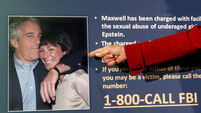Search crews find bodies from Air France jet
Search crews have found two bodies believed to be from the missing Air France flight which disappeared over the Atlantic with five Britons on board, Brazil’s air force said today.
All 228 people on board, including 12 crew, a baby and seven children, are thought to have perished in the world’s worst aviation disaster since 2001.














